
Horses
Sable Island National Park Reserve
Sable Island is widely known for its wild horse population. They have thick, woolly, shaggy coats, often brown, and stocky bodies. Today’s population descended from horses introduced to the island in the 1700s.
The Sable Island horses are considered an iconic feature of the island, with both natural and cultural heritage value. The current population of wild horses on Sable Island is about 450 horses.
On this page
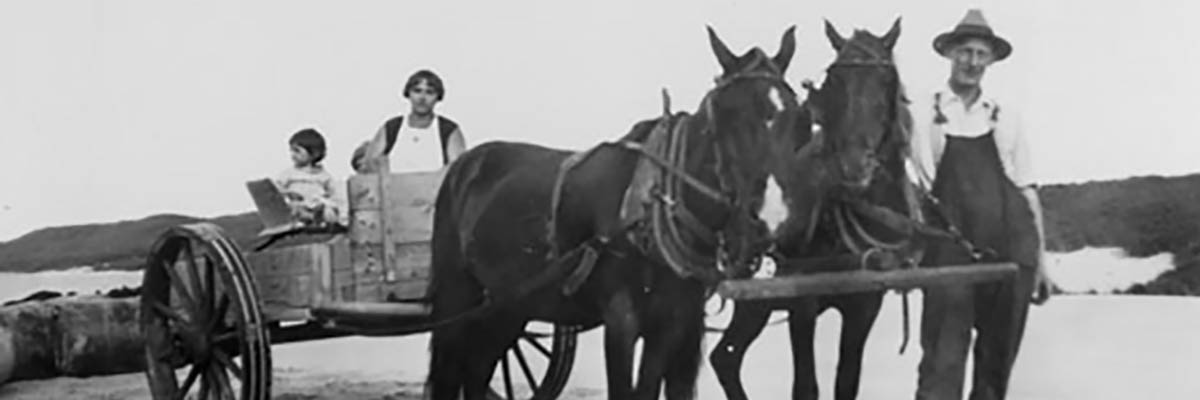
Photo: Clara Dennis, Nova Scotia Archives, 1981-541 number 122.
Origin
The population of wild horses on Sable Island has existed for over 250 years. The Sable Island horses are believed to be descendants of animals introduced to the island in the 1700s.
The generally accepted idea is that Boston minister Andrew LeMercier first introduced the horses to the island in 1737 and 1738. He believed a settlement on Sable Island would benefit those who shipwrecked there. LeMercier later tried to sell the island and animals, including 20-30 horses.
Sometime after 1755, Boston ship owner Thomas Hancock shipped horses to Sable Island. The horses were from the deported Nova Scotian Acadians that he transported to New England colonies during the period known as the Great Upheaval.
He also transported cows, sheep, goats, and hogs to the island. There was abundant food, no predators, few diseases or parasites, and little need for animal enclosures. The idea was that the animals would take care of themselves, that they would reproduce, and periodically they could be harvested and sold for profit.
Only the horses survived in the long term.
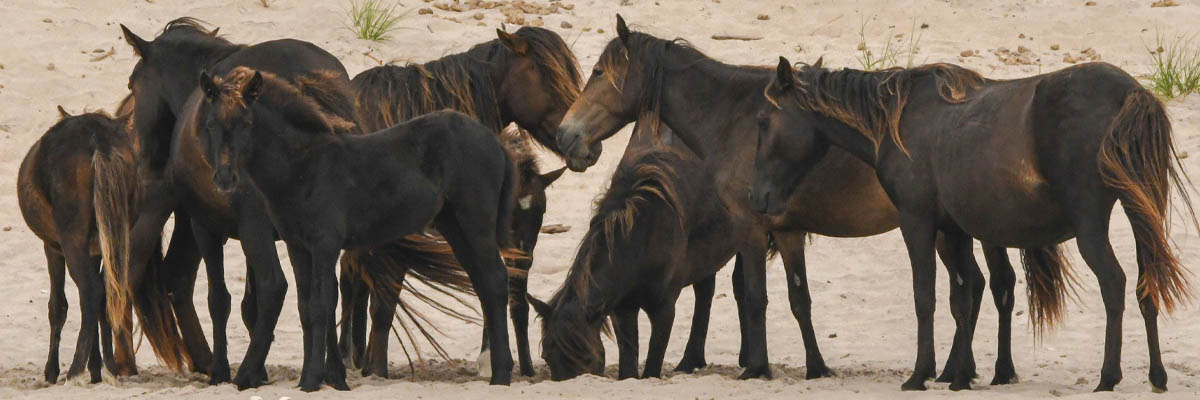
Photo: Sarah Medill
Behaviour
Like other wild horses, the horses on Sable Island live in social structures of small family groups called bands. In general, bands include a dominant stallion, one or more mares, and their young offspring.
The dominant males typically breed with all the females of reproductive age in the band. Subdominant males can also be present in a band, and they might occasionally mate with the band females as well.
Young males often leave their family band between the ages of 1 and 4 and join a bachelor band of subordinate males. These males may obtain a band by either “stealing” mares or overthrowing a dominant stallion.
There are also solitary males on Sable Island, which are most often overthrown stallions.
Home ranges
Sable Island horses are not overly territorial, but they do have home ranges. Many of the bands’ home ranges overlap, especially when near good watering or foraging places. These areas are centres of activity and important habitats for the Sable Island horses.
Diet
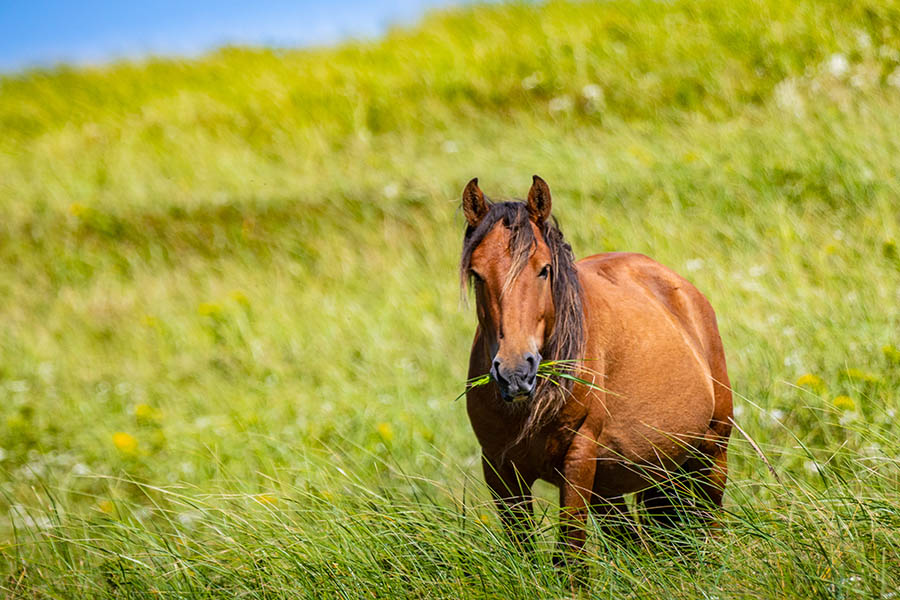
Photo: Acorn Art & Photography
Sable Island horses primarily forage on the abundant marram grass. For horses grazing on the east and west spits, sandwort and even washed-up algae are important parts of their diet. They also forage on bluegrass and red fescue grass, which can be plentiful in the island's interior.
On the west side of Sable Island, the horses have access to freshwater ponds. On the east side of Sable Island, there are no ponds, so the horses dig small water holes in the sand to access the groundwater.
The ponds and water wells are surface exposures of the freshwater lens on Sable Island. A freshwater lens is a layer of fresh underground water that floats above the denser saltwater.
Winter
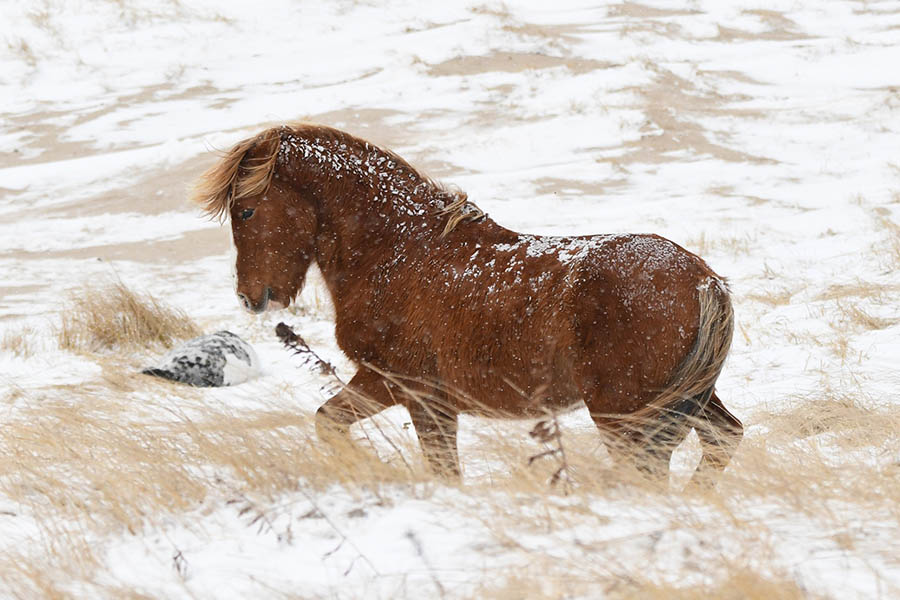
Photo: Sarah Medill
During the winter months, Sable Island horses move towards the center of the island. During adverse weather, they usually hunker down on the leeward (downwind) side of dunes for protection against the wind. The horses grow a thick coat each year to help protect them from the elements.
At this time of year, their diet consists of dead or dry vegetation. The horses rely on energy reserves they accumulated from feeding through the summer and autumn.
Horses and seals
Horses and seals mostly ignore each other, as they do not eat the same food or use the same spaces. However, there is an interesting link between these two species of mammals. This link between horses and seals may partly explain increases in the Sable Island horse population.
Sable Island grey seals feed on many species in the ocean and then haul out onto the long beaches to rest. They deposit large amounts of marine nutrients, mostly through their urine and feces, on the island. These marine nutrients are taken up by plants, which results in an increase in plant growth and richness. The horses feast on these plants.
Hundreds of thousands of seals gather on Sable Island for the breeding season.
Population fluctuations
Population estimates since 1961 show the horse population has increased over time. The current population size has varied in recent years between 450 and 590.
Sable Island horse population, 1961 to 2023
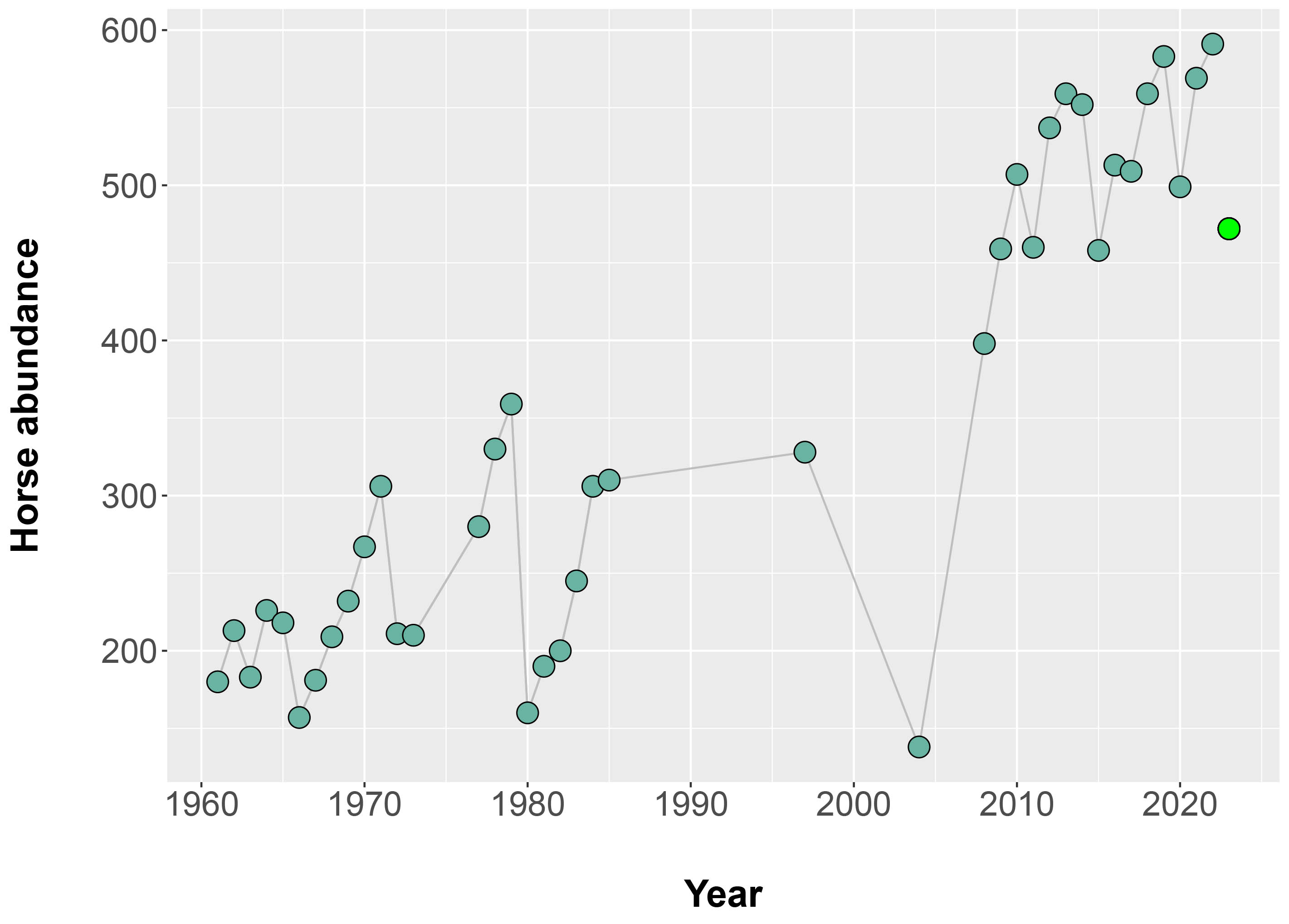
Text version
Credit: The University of Saskatchewan
The 2023 value is a preliminary estimate. The final count will be available in 2024.
| Year | Population size | Source |
|---|---|---|
| 1961 | 180 | Welsh (1975) |
| 1962 | 213 | Welsh (1975) |
| 1963 | 183 | Welsh (1975) |
| 1964 | 226 | Welsh (1975) |
| 1965 | 218 | Welsh (1975) |
| 1966 | 157 | Welsh (1975) |
| 1967 | 181 | Welsh (1975) |
| 1968 | 209 | Welsh (1975) |
| 1969 | 232 | Welsh (1975) |
| 1970 | 267 | Welsh (1975) |
| 1971 | 306 | Welsh (1975) |
| 1972 | 211 | Welsh (1975) |
| 1973 | 210 | Welsh (1975) |
| 1977 | 280 | Locke (1987) |
| 1978 | 330 | Locke (1987) |
| 1979 | 359 | Locke (1987) |
| 1980 | 160 | Locke (1987) |
| 1981 | 190 | Locke (1987) |
| 1982 | 200 | Locke (1987) |
| 1983 | 245 | Locke (1987) |
| 1984 | 306 | Locke (1987) |
| 1985 | 310 | Locke (1987) |
| 1997 | 328 | Fisheries and Oceans Canada (DFO) aerial photo partial count only |
| 2004 | 138 | Fisheries and Oceans Canada (DFO) aerial photo |
| 2008 | 398 | P. McLoughlin, unpublished data |
| 2009 | 459 | P. McLoughlin, unpublished data |
| 2010 | 507 | P. McLoughlin, unpublished data |
| 2011 | 460 | P. McLoughlin, unpublished data |
| 2012 | 537 | P. McLoughlin, unpublished data |
| 2013 | 559 | P. McLoughlin, unpublished data |
| 2014 | 552 | P. McLoughlin, unpublished data |
| 2015 | 458 | P. McLoughlin, unpublished data |
| 2016 | 513 | P. McLoughlin, unpublished data |
| 2017 | 509 | P. McLoughlin, unpublished data |
| 2018 | 559 | P. McLoughlin, unpublished data |
| 2019 | 583 | P. McLoughlin, unpublished data |
| 2020 | 499 | P. McLoughlin, unpublished data |
| 2021 | 569 | P. McLoughlin, unpublished data |
| 2022 | 591 | P. McLoughlin, unpublished data |
| 2023 | 450 | P. McLoughlin and Zoe Lucas, unpublished data |
This graph shows the horse population’s size on Sable Island between 1961 and 2023. During this period, the population has shown an overall increase. However, there are several years where the population decreased, followed by several years of steady increase.
- Between 1753 and 1952, population estimates ranged from 20 to 400 horses.
- Between 1961 and 1985, the population estimates varied from 133 to 360 horses.
- During the late 1990s, the horse population was regularly greater than 400 horses.
- Between 2008 and 2012, the population experienced a 42 percent increase in the number of horses (from 375 to 534 individuals).
The horse population estimates vary in accuracy but demonstrate the inter-annual changes in population size. The data are derived mostly from an annual census of all horses, and in some cases, from aerial photo counts.
Current population
A research program based out of The University of Saskatchewan surveys the population each year to form an official count. Based on observations during the 2023 survey, and as reported by the Sable Island Institute, we are expecting greater than 25% overwinter mortality, but this will be offset by the birth of new foals. The official count for 2023 will be available in winter, 2024.
Groups of animals in nature usually have cycles of high and low abundance, as they are in a dynamic equilibrium (a changing state of balance), with their food, predators, and parasites. So, it is not unusual to see the population go up and down in this way.
Parks Canada will continue to work closely with researchers and partners to monitor the health of the wild horse population at Sable Island National Park Reserve as part of an ongoing effort to maintain the ecological integrity of the island.
Births
Most foals are born between April and July; however, foaling can occur during other times of the year. Mares can conceive as yearlings (1-year olds), but Sable Island’s mares have a low foaling rate at this age. Rates are higher for mares age 3 and older but are the highest from ages 6 to 15. Wild horses typically have a gestation period of 11-12 months.
Deaths
Most mortality occurs in the late winter to spring because of lower food availability and wet, windy, and cold weather. This can create unfavourable conditions for the horses, which is not unusual for many wildlife species.
Mortality rates are higher for foals and yearlings ages 0-2.
In recent years the population has experienced an average overwintering mortality rate of 12%.
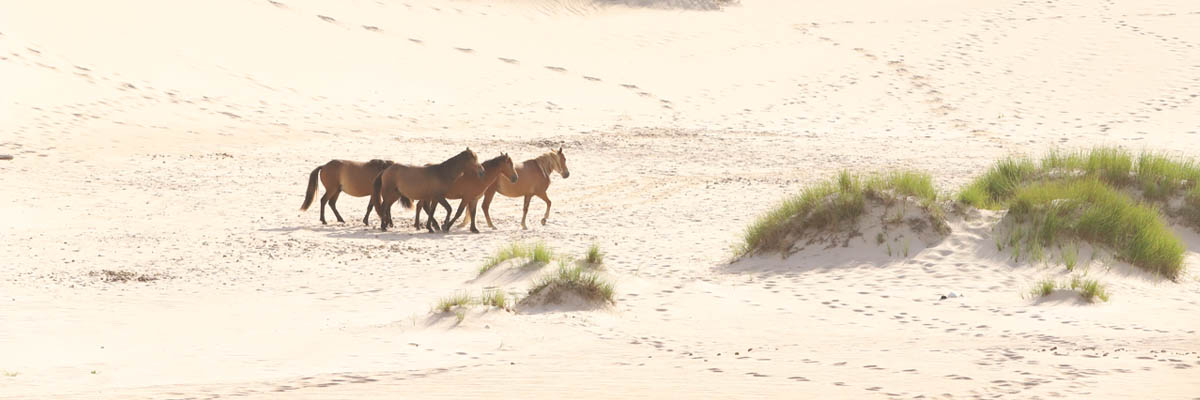
Photo: Sarah Medill
Genetic structure
The genetic structure of Sable Island’s horses reflects the forces of natural selection and genetic drift that have influenced the population for over 250 years. The horses have adapted remarkably well to their environment.
Prior to 1961, there were attempts to “improve” or manage/breed the population for desired traits or characteristics. Stallions and broodmares of specific breeds were introduced to “improve” the horses’ marketability for sale on the mainland. Some of the breeds introduced to Sable Island included: Canadian, Morgan, Standardbred, Clydesdale, and Thoroughbred.
Since 1961, no human interference has been permitted and the horses have not been subjected to reproductive activities or artificial selection.
There is no clear single breed that is most closely related to Sable Island’s horses. The Sable Island horse population is most genetically similar to Newfoundland, Icelandic, and Norwegian Fjord breeds. The population of Sable Island’s wild horses is genetically distinct from these breeds because they have an array of genetic characteristics (alleles) that are very diverse, more so than other recognized breeds of horses. This genetic evidence suggests that Sable Island’s horses have disproportionately increased their overall genetic diversity compared to domestic horses.
Inbreeding
Inbreeding (breeding with close relatives) can occur in small, isolated populations. Inbreeding depression is where the lack of genetic diversity has a negative impact on a population’s ability to thrive.
Recent research has detected modest levels of inbreeding depression in the Sable Island horse population, but the impact of this depends on many factors – the year, season, age, and sex of an individual, as well as conditions in the environment – weather, food availability, and parasite abundance.
Researchers continue to monitor the genetic diversity and health of Sable Island’s horse population.
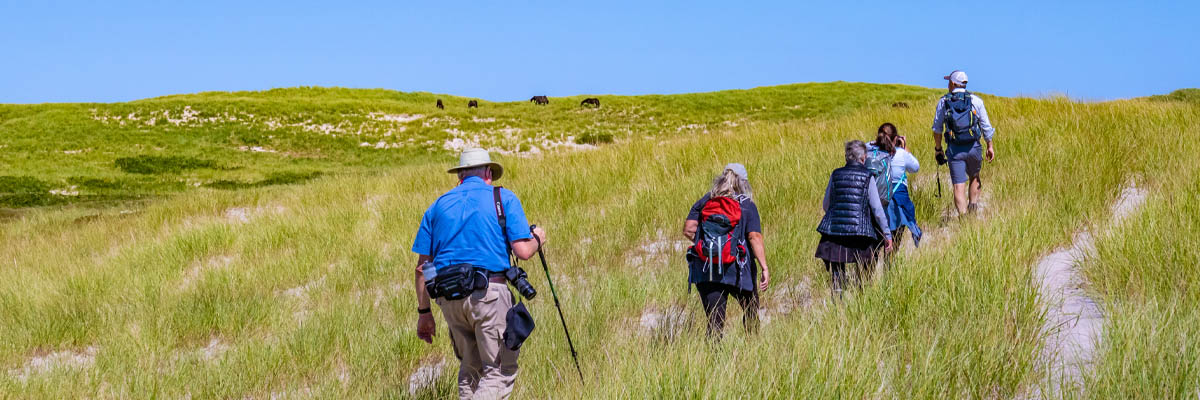
Photo: Acorn Art & Photography
Protection
The wild horses have lived on the island without human interference since 1961. They were formally protected under the Sable Island Regulations of the Canada Shipping Act.
Sable Island was established as a national park reserve in 2013. Parks Canada assumed responsibility for the management of the island and the horses. During consultation at the time of park establishment, Parks Canada received a clear message that the public wanted a consistent and high level of federal protection for the horses.
The horses are considered a naturalized species and part of the island ecosystem because the population has existed on the island for more than 50 years. As a naturalized species, the horses are protected under the Canada National Parks Act and the National Parks of Canada Wildlife Regulations.
Parks Canada does not control or actively manage the Sable Island horse population. As there is no immediate risk to these animals, Parks Canada does not plan to intervene, allowing them to continue their natural behaviour undisturbed. If new data suggests that the horses are at risk, Parks Canada would then evaluate options to ensure their protection.
Human interaction
The horses do not live and breed as domesticated animals. They do not depend on humans for survival, and they do not receive veterinary care. People are not allowed to touch, feed, or otherwise interact with the horses.
As with other wildlife in national parks, the Sable Island horses are protected from hunting, harm, and disturbance.
Parks Canada requires people to maintain a distance of at least 20 m from the horses.
Biosecurity measures are in place to protect Sable Island and reduce the risk of introduction of any organic material including plants, seeds, soil and diseases. This means that any footwear used on the island is cleaned and disinfected prior to arrival, no riding or horse care equipment or footwear that has been worn on a horse farm is allowed on the Island, and clothing is visually inspected for any seeds or insects (such as burdocks, spiders, ticks, etc.).
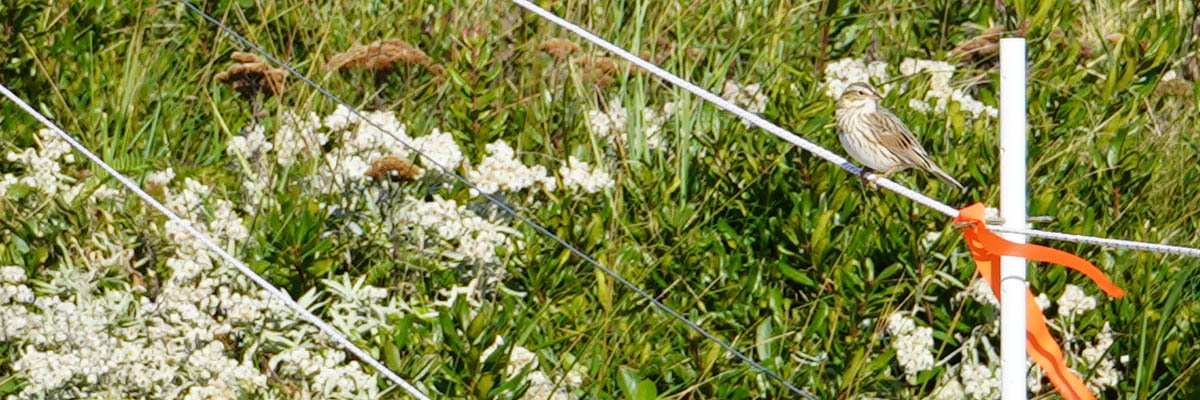
Research
Parks Canada will continue to work closely with researchers and partners to monitor the health of the wild horse population as well as other aspects of the ecology of Sable Island National Park Reserve. This is part of the ongoing effort to maintain the ecological integrity of the island.
Parks Canada is collaborating with experts to research and monitor the ecological role of the horses, other animals, and plants on Sable Island. The data collected helps to inform priorities and guide conservation efforts.
Fences in the Sand
A new exclosure study by Parks Canada and the Sable Island Institute will help us better understand the role of horses on the ecosystems of Sable Island National Park Reserve.
Further reading
Colpitts, J., McLoughlin, P.D. & Poissant, J. Inbreeding depression in Sable Island feral horses is mediated by intrinsic and extrinsic variables. Conserv Genet (2023).
Freedman B. (2016). Sable Island: explorations in ecology and biodiversity. Fitzhenry and Whiteside Limited, Markham, Ontario. 360p.
Medill, S. A. (2018). Sociality of Sable Island horses: Population, group and individual interactions. Ph. D. Thesis, University of Saskatchewan, Canada.
Welsh, D.A. (1975). Population, behavioral and grazing ecology of the horses of Sable Island, Nova Scotia. Ph. D Thesis, Dalhousie University, Canada.
- Date modified :



















